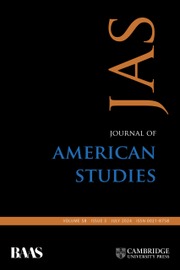Big Sister: Feminism, Conservatism, and Conspiracy in the Heartland examines the arguments between conservative and feminist women in Indiana surrounding the Equal Rights Amendment and second-wave feminism in an attempt to understand the differences between the two groups, explain each side to the other, and “ultimately answer the question of what happened to feminism in a Midwestern state like Indiana” (6).
Kempker explains how working within a historically conservative community that valued conformity and politeness caused Indiana feminists to adopt a “low-key” approach to ERA ratification (4). This tactic prioritized ratification of the ERA and ignored divisive feminist issues, such as abortion or homosexuality, in order to present a respectable, moderate, and wholesome image of Indiana wives and mothers merely seeking justice and equality. Accordingly, Hoosier feminists worked largely behind the scenes lobbying state Congressmen for support, and they discouraged public protests from women's liberation, lesbians, and other radical feminist groups. Kempker maintains that this strategy was intended to both preempt right-wing criticism of the ERA and enable feminists to work with moderate conservative women and Republican Congressmen whose support for the amendment was vital in securing ratification (69–71). In January of 1977, this strategy paid off as Indiana became the thirty-fifth state to ratify the ERA. Feminists were proud of this accomplishment, especially as it coincided with the International Women's Year and the National Women's Conference set to occur in November. Feminist celebrations, however, were short-lived.
Galvanized by the passage of the ERA, conservative women launched a vigorous, rancorous, and successful campaign to dominate Indiana's representation at the IWY National Women's Conference in an effort to thwart the feminist agenda. These women argued that feminists were communists, collectivists, sexual deviants, and planners who used rights rhetoric in an attempt to homogenize gender differences in order to pave the way for a one-world totalitarian government through the United Nations (3). Indiana feminists thought such claims were bizarre and hyperbolic and refused to respond to them directly (110). Kempker, however, claims that conservative women were not exaggerating, but instead meant every word that they said (2–3).
She argues that opposition to second-wave feminism and the ERA among conservative Hoosier women was inspired in part by fear of a one-world totalitarian government, a conspiracy theory born with the creation of the United Nations and fed by the anticommunist hysteria that pervaded American society in the postwar years. Kempker maintains that various American traditions, including the fear of concentrated power in government as expressed by the anti-federalists, the religious revivalism and millenarianism of the Great Awakenings, and the increasing acceptance of conspiracy theories from the Illuminati in the 1700s to the assassination of John F. Kennedy in 1963, informed the worldview of many conservative women, allowing them to accept the one-world-government conspiracy. Many of them were involved in anticommunist organizations, such as the Minute Women, Pro-America, and the John Birch Society, all of which warned of a one-world-government conspiracy where individual characteristics such as nationality, race, ethnicity, religion, and gender would disappear beneath the homogenizing and collectivizing forces of communist totalitarianism (38). In addition, these organizations taught that civil rights, feminism, the United Nations, and internationalism were inspired and led by communists (52–53). Such views were buttressed by fundamentalist Christianity and millenarianism as many conservative women were evangelical Christians who viewed the Cold War in apocalyptic religious terms (44).
By the 1970s, Kempker argues, right-wing women's views of feminism were deeply rooted in Cold War conspiracy theories about totalitarianism and one-world government and molded by their belief in 1950s societal norms regarding gender roles whereby the heteronormative family was the backbone of society (90). To defend God, country, gender differences, and the traditional family, conservative women refused to be polite and play nice like the Indiana feminists (129). Meanwhile, the “low-key” approach towards ERA ratification and disagreements on how to handle the vicious attacks by the right caused the feminist coalition to collapse, allowing conservative women to dominate Indiana's delegation to the IWY national conference (121).
Overall, Big Sister is an important contribution to the growing literature that places conservatives and feminists on a more equal footing in order to explore the diversity of women's political interests (5). In addition, Kempker's examination of various grassroots feminist and conservative organizations, their activities, and their leaders provides important links between the political activism of national leaders and organizations and their local supporters. Moreover, her contribution to conspiracism historiography is particularly compelling given the current American political climate. Her analysis of the appeal and success of conspiracism in recent history is illuminating, especially as she traces its various manifestations over subsequent years ending with the 2016 presidential campaign of Donald Trump.


